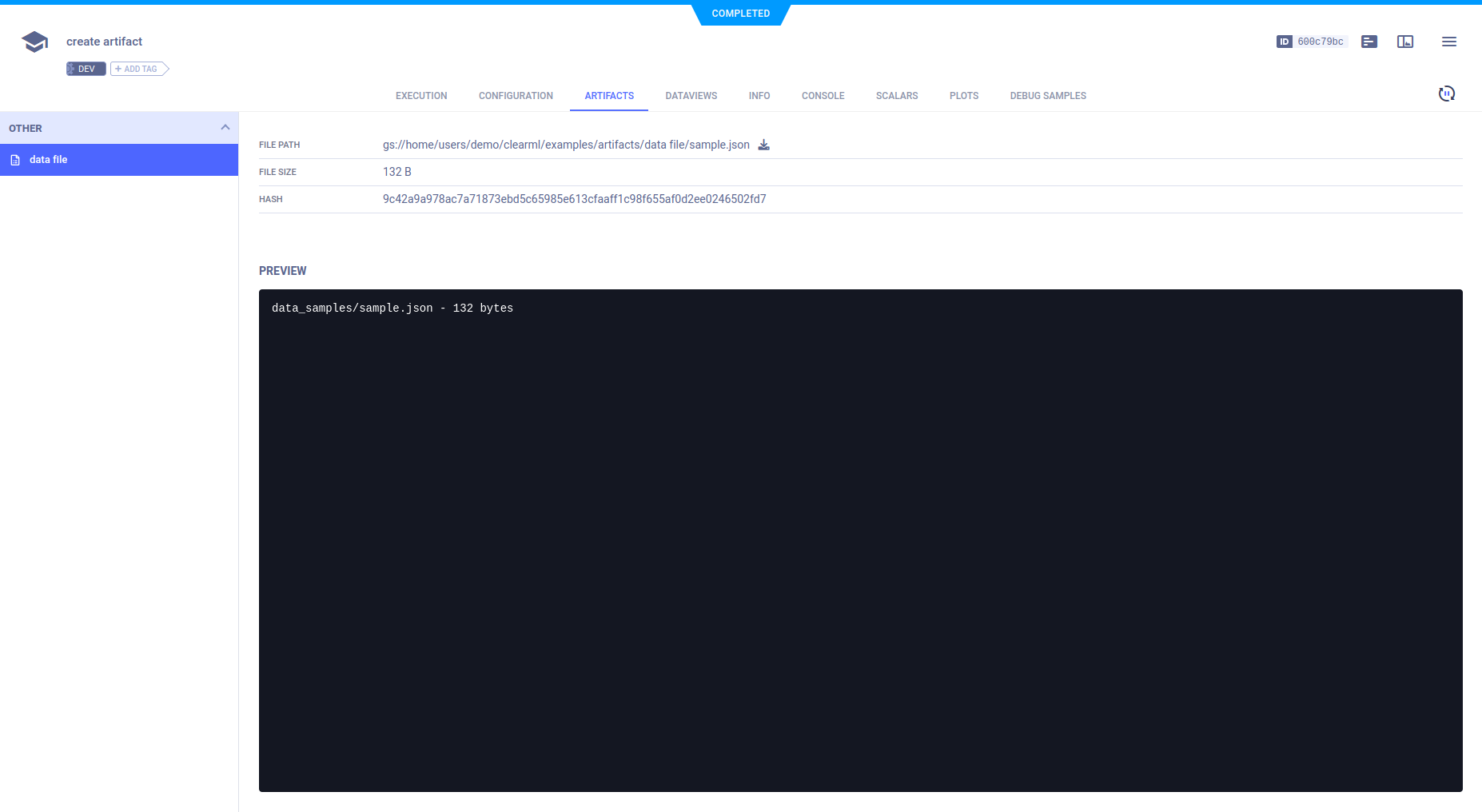Using Artifacts
The using_artifacts_example script demonstrates uploading a data file to a task as an artifact and then accessing and utilizing the artifact in a different task.
When the script runs it creates two tasks, create artifact and use artifact from other task, both of which are associated
with the examples project. The first task creates and uploads the artifact, and the second task accesses the first task's
artifact and utilizes it.
Task 1: Uploading an Artifact
The first task uploads a data file as an artifact using Task.upload_artifact(),
and inputting the artifact's name and the location of the file.
task1.upload_artifact(name='data file', artifact_object='data_samples/sample.json')
The task is then closed, using Task.close(), so another task can be
initialized in the same script.
Artifact details (location and size) can be viewed in ClearML's web UI > experiment details > ARTIFACTS tab > OTHER section.

Task 2: Accessing an Artifact
After the second task is initialized, the script uses the Task.get_task
class method to get the first task and access its artifacts, specifically the data file artifact. The get_local_copy
method downloads the files and returns a path.
ClearML manages a cache of all downloaded content, so the code won't download the same data multiple times. See Caching for configuration options.
preprocess_task = Task.get_task(task_name='create artifact', project_name='examples')
local_json = preprocess_task.artifacts['data file'].get_local_copy()
Task 2 then reads the contents of the downloaded artifact and prints it to screen.